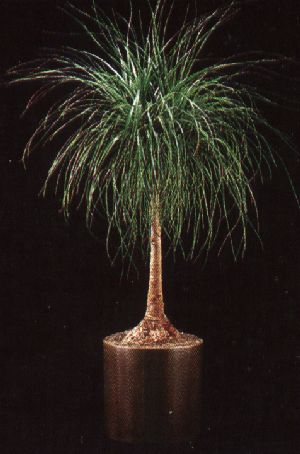Ponytail Palm


CHARACTERISTICS: The ponytail palm
takes its name from its resemblance to hair cascadeing out of a ponytail.
It's also called a "bottle palm" because its trunk becomes a bottle like
bulb at soil level. Because of its massive size the plants are mostly root-bound.
While they can store water in their bulb, and use their water slowly, they
probably don't have a lot of soil in their pot. If the roots become too
dry the lower leaves turn brown or yellow and the plant looks a little
ashy.
These are durable high light plants. They
take up a lot of room and the leaf edges are rather sharp.
POTTING: The best compost consists of two parts fibrous loam, one part leaf mold and a bit of sand. Repotting should be done in the spring. Loose soil should be removed with a pointed stick and the plants are set into slightly larger pots
PRUNING: Remove discolored lower leaves. Do not trim brown off the ends. Brown is normal and more cutting will produce more brown, plus a jagged edge.
PROPAGATION: Seeds can be sown in the spring in well-drained pots of sandy loam. Place them in a greenhouse that has a 65-degree temperature. Young shoots can be inserted in pots filled with sand or sandy soil in the spring. Place them in a propagating case to speed up the growth of roots.
VARIETIES: B. recurvata and its
variety, glauca.